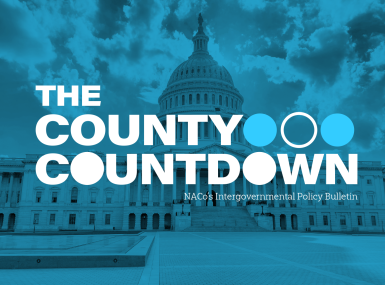White House launches federal flood standard support website and tool
Author

Brett Mattson

Naomi Freel
Upcoming Events
Related News

Key Takeaways
On April 11, the White House launched a new website and mapping tool to help users with the ongoing implementation of the Federal Flood Risk Management Standard (FFRMS). Through this new tool, county officials, staff and residents can search any address to determine if that location is a high flood area. This tool is designed to help counties decide where to best locate projects that use federal funds, but it will also serve residents by making the FFRMS zones more transparent.
Importance of the Federal Flood Risk Management Standards (FFRMS)
The FFRMS were established through Executive Order 13690 and reinstated through Executive Order 14030. They require federal agencies to consider and safeguard federally funded buildings and projects from flood risks. Specifically:
- The FFRMS are used to ensure federal agencies consider the current and future risk flood risk in projects utilizing federal funds.
- The FFRMS apply to projects involving new construction, substantial improvements or repairs aimed at addressing substantial damage.
- Projects falling under FFRMS coverage include critical infrastructure initiatives, broadband internet development and renewable energy projects.
The FFRMS play a crucial role in protecting communities from flooding and assists in building resilience against the impacts of the climate crisis. It is imperative that counties understand FFRMS zones not only to better understand flooding risks, but also to enhance the likelihood of securing federal funding for building and resilience projects.
Related News

States file lawsuit challenging FEMA’s new rules on emergency management grants
On November 4, a coalition of 12 states filed a lawsuit against the U.S. Department of Homeland Security (DHS) and the Federal Emergency Management Agency (FEMA), alleging that recent changes to key emergency management grants are unlawful and could disrupt state and local preparedness efforts.

County Countdown – Nov. 4, 2025
Every other week, NACo's County Countdown reviews top federal policy advocacy items with an eye towards counties and the intergovernmental partnership.
FEMA bill staffers offer insights into reform effort
NACo Intergovernmental Disaster Reform Task Force heard from staffers who helped shape a bill that would make dramatic changes to the Federal Emergency Management Agency.